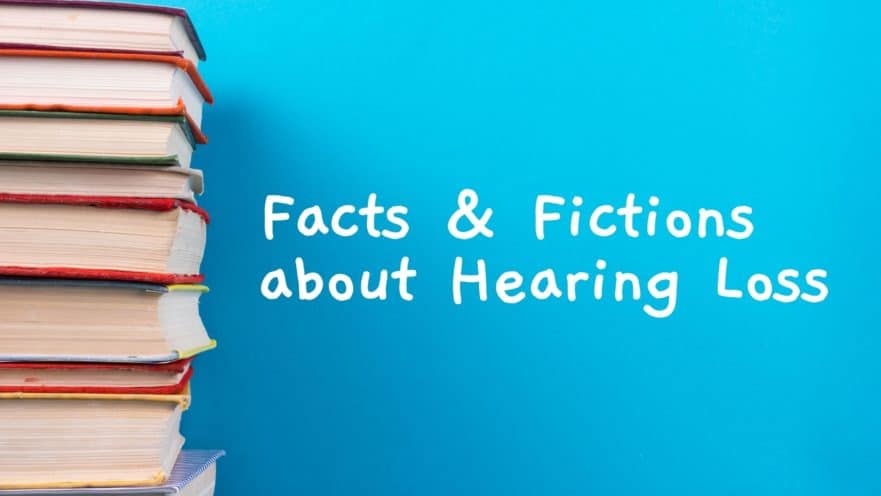- The Harm of Smoking to the Ears - April 9, 2025
- The Importance of Exercise for Hearing Health - March 11, 2025
- Movie Theaters and Hearing Aids - February 13, 2025
Though hearing loss is one of the most common conditions people live with today, there are numerous misconceptions about it. This often prevents or delays people from addressing hearing loss symptoms which can take a toll on health in a variety of ways. Deconstructing these myths and understanding hearing loss can help you identify and treat changes to your hearing health.
Fiction: Hearing loss only happens to older adults.
Fact: There are several causes of hearing loss that impact people of all ages.
Age-related hearing loss, known as presbycusis, is only one cause of hearing loss. Impaired hearing can also occur as a result of exposure to loud noise. One-time or regular exposure to loud noise is a major cause of hearing loss. In fact:
- The World Health Organization estimates that over 1 billion people (ages 12-35) are at high risk of hearing loss due to loud noise exposure.
- Almost 15% of school-age children (ages 6-19) have some degree of hearing loss.
- 22 million people are exposed to hazardous noise levels in the workplace.
These statistics highlight the prevalence of noise-induced hearing loss and the risk of its development.
Fiction: People can just talk louder so that I can hear better.
Fact: Speaking louder can actually make it more challenging to hear.
Though it is common to assume that increasing the volume will solve hearing issues, this can further distort noise. Projecting one’s voice and speaking louder can contribute to the muffling of sound, making it challenging to identify and hear individual words. It is important to know that people experience hearing loss differently so this strategy can be ineffective. It also isn’t a long-term sustainable solution to hearing challenges.
Fiction: I can still hear so my hearing loss doesn’t need to be treated now.
Fact: This can be an earlier symptom of hearing loss and if left untreated, can worsen impairment.
Hearing loss exists on a spectrum – from mild to severe. Being able to still hear but just not as well indicates that hearing loss is present but may not be profound. To protect your hearing from further harm, it is important to intervene and address these changes (even the most minor) to your hearing health. If it remains untreated, then these symptoms can worsen as impairment moves from mild to more severe.
Fiction: Hearing loss is not too serious of a health issue.
Fact: Hearing loss doesn’t just affect hearing but increases health risks.
Untreated hearing loss has multifaceted effects that impact health and quality of life. Symptoms that remain untreated strain communication – an essential way we navigate on a day-to-day basis. This can affect relationships, work performance, and social engagement. Because conversations become challenging to participate in, people often avoid them altogether. Social withdrawal is a major outcome of untreated hearing loss. This can contribute to depressive symptoms like loneliness, isolation, and anxiety. Additionally, extensive research shows that untreated hearing loss increases the risk of cognitive decline and related conditions like Alzheimer’s.
Fiction: Hearing aids are bulky, outdated devices.
Fact: Today’s hearing aids are more innovative in their design and technology than ever before.
There is a wide range of hearing aid options that offer a variety of colors, styles, technologies, and features. Today’s hearing aids are savvy pieces of technology that can seamlessly integrate into daily life. From revamped traditional hearing aids to nearly invisible devices worn completely in the ears, you have numerous options to choose from. Contact us to learn more!

